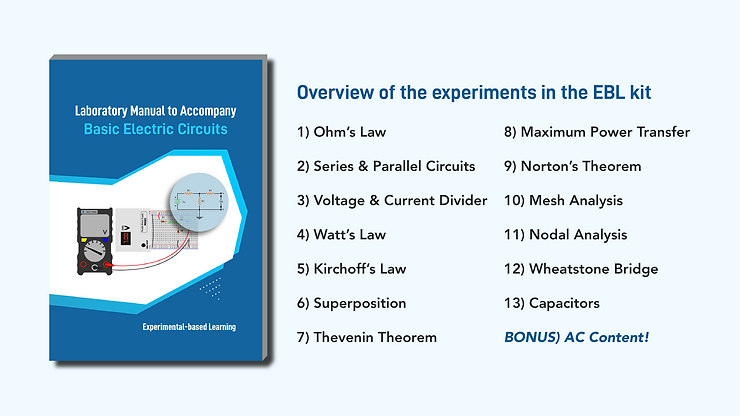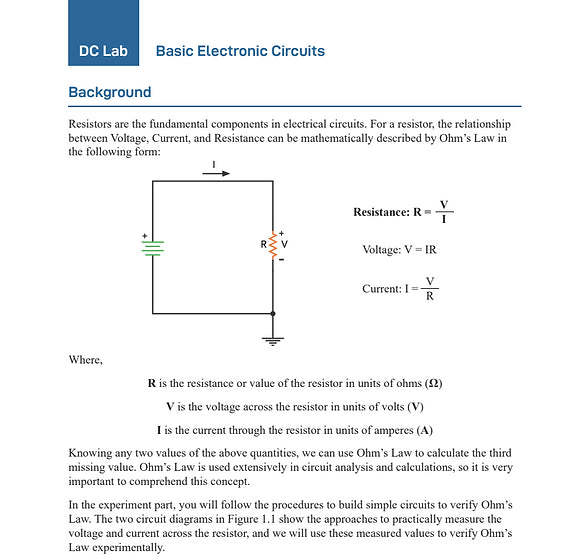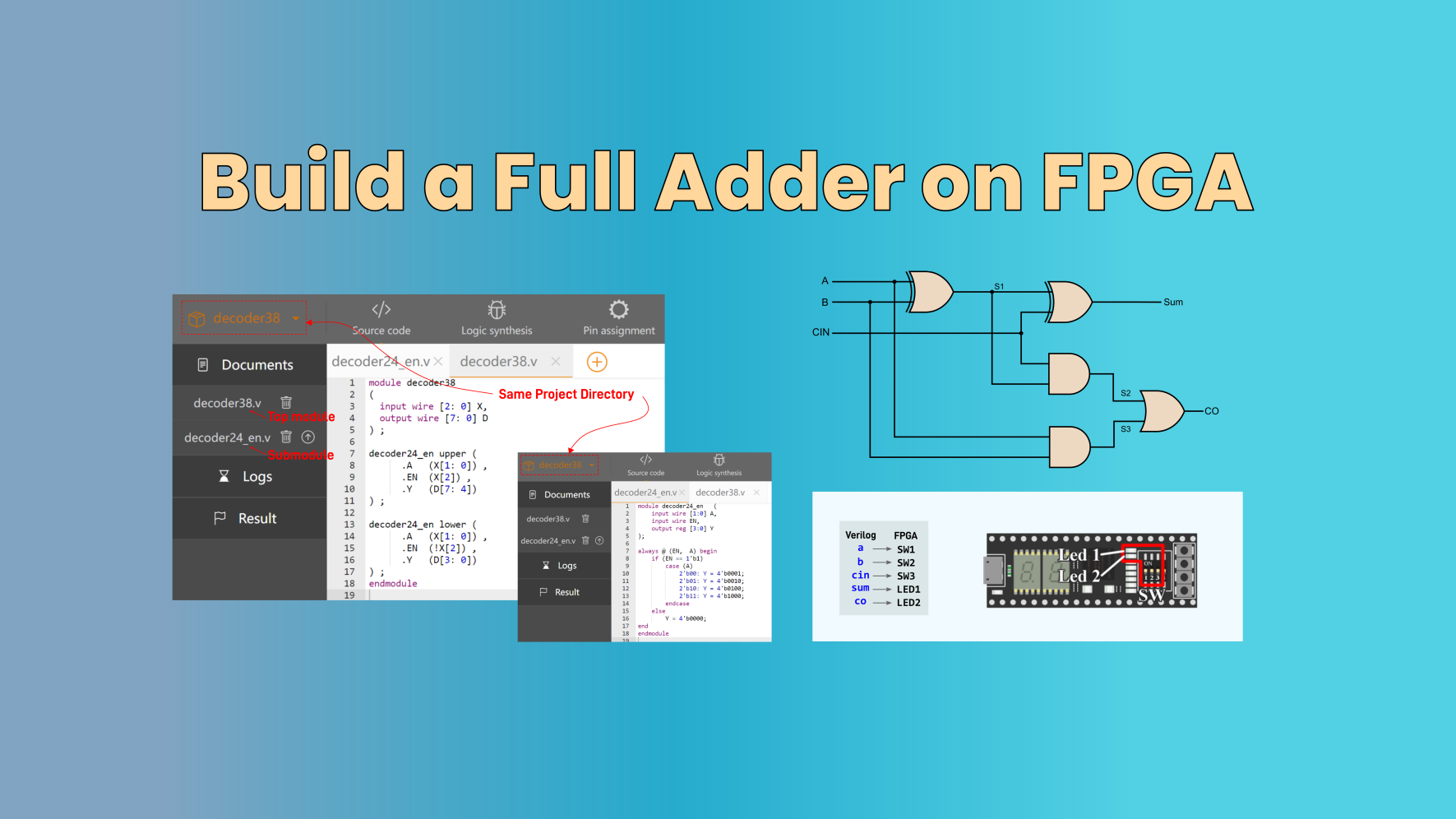What is Ohm's Law Calculation and
What is Ohm's Law?
Ohm's Law, a cornerstone in the field of electronics, establishes the crucial relationship between voltage, current, and resistance within an electrical circuit. This principle, encapsulated in the equation
V = I x R
holds as much importance to electronics students as Einstein's Relativity theory does to physicists.
In the simplest of terms, Ohm's Law posits that the voltage (V) is the product of the current (I) and the resistance (R). This can also be expressed as volts equals amps multiplied by ohms, or
V = A x Ω
This principle has been named after its proposer, the celebrated German physicist Georg Ohm (1789-1854). Ohm's Law elucidates the fundamental quantities in play within circuits: voltage, current, and resistance.
Importance of Ohm's Law in understanding electrical circuits
Ohm's Law plays an indispensable role in understanding electrical circuits. It establishes the basic relationship among the three primary electrical properties: voltage, current, and resistance. This understanding is fundamental to the analysis, design, and troubleshooting of any electrical circuit.
In essence, Ohm's Law is a fundamental tool in the electrical and electronics field. It provides a solid foundation for understanding how electricity works and how to safely and efficiently manipulate it in practical applications.
What's Ohms Law Calculation? Mathematical equation and its components - voltage, current, and resistance
Ohm's Law is an essential mathematical principle in the field of electrical and electronic engineering. It is represented as
V= I x R
To understand the formula further, here's a breakdown of these components:
1. V (Voltage): This is the force that propels the electric charge through a circuit. It's the energy per unit charge and is measured in volts (V).
2. I (Current): Current refers to the flow of electric charge, or put simply, the rate at which charge is moving. It is measured in amperes or amps (A).
3. R (Resistance): This property opposes or resists the flow of electrical current in a circuit. It is measured in ohms (Ω).
The relationship between voltage, current, and resistance
Ohm's Law describes the relationship between voltage, current, and resistance in an electric circuit: the current is directly proportional to the voltage and inversely proportional to the resistance, assuming a constant temperature. This means that if the voltage increases, the current increases, and if the resistance increases, the current decreases.

The figure below is referred to as the Ohm’s Law Triangle and it is used to visualize the mathematical relationship between the three.
Here's how to read the triangle:
1. If you want to find voltage (V), you cover up V in the triangle, leaving you with I (current) next to R (resistance). This tells you that voltage is equal to current multiplied by resistance
V = I x R
2. If you want to find the current (I), you cover up I, leaving you with E over R. This tells you that current is equal to voltage divided by resistance
I = V/R
3. If you want to find resistance (R), you cover up R, leaving you with E over I. This tells you that resistance is equal to voltage divided by current
R = V/I
Practical applications of Ohm's Law
Ohm's Law has numerous practical applications, such as:
1. Analysis and Design: Ohm's Law is used to design electronic circuits and systems by helping engineers or technicians determine the correct values for voltage, current, or resistance needed in a circuit to achieve their desired output. This is vital in the design of different devices such as resistors, capacitors, transistors, and integrated circuits, among others.
2. Troubleshooting: When a circuit isn’t working as expected, Ohm's Law can be used to identify and fix the problem. By understanding the relationship between voltage, current, and resistance, one can diagnose whether the issue lies in an excess or lack of voltage, an incorrect level of current, or an improper amount of resistance.
3. Power Calculation: Ohm's Law, in conjunction with the power law, can be used to calculate the power consumed by a device or a component in a circuit. This is essential in designing power supplies or choosing the correct components to handle the power in a circuit.
4. Safety: Understanding Ohm's Law is crucial for safety reasons. It allows one to calculate the amount of current that will flow in a circuit for a given voltage and resistance, helping to prevent electrical shocks or fires.
Understanding Resistance
Electrical resistance, measured in ohms (Ω), is a property that quantifies how a material opposes or hinders the flow of electrical current.
Factors affecting resistance
The resistance of a conductor is influenced by several factors:
1. Material: The atomic structure of different materials can either facilitate or obstruct the flow of electrons. Metals like copper and silver, which have low resistance, are good conductors, while high-resistance materials like rubber and glass are good insulators.
2. Length: The longer the conductor, the greater the resistance, as electrons encounter more opposition over a longer distance.
3. Cross-sectional Area: A larger cross-sectional area lowers resistance by providing more space for electron flow.
4. Temperature: For most materials, resistance increases with temperature. More thermal energy causes atoms to vibrate more, leading to more collisions and hindering electron flow.
Let us understand Ohm's Law: The effect of resistance on current and voltage
Resistance directly impacts both current and voltage within a circuit, as defined by Ohm's Law (V = I x R).
1. Current: With a constant voltage, an increase in resistance leads to a decrease in current, as there is more opposition to the flow of electrons.
2. Voltage: With a constant current, an increase in resistance results in an increase in voltage, as more force is needed to push the same amount of current through the circuit.
In our Electronics Learning kit - "Basic Electric Circuits" we have broken down the electric circuits concepts in a much simpler way with practical application. This comprehensive kit is designed to enhance electronics education by offering structured learning, hands-on experimentation, and critical thinking development.

EIM Technology Basic Electronic Learning Kit
Introduction to Simple Circuits
A simple electrical circuit, or a basic circuit, primarily consists of three components: a power source (such as a battery), a load (like a light bulb or a resistor that works using the electricity), and a conductive path (wires that connect the power source to the load). The power source provides the force or voltage that makes the electric charge or current flow through the circuit. The current leaves the positive terminal of the power source, moves through the conductive path, does work at the load, like lighting a bulb, and returns to the negative terminal of the power source, thereby completing the circuit.
Resistance plays a pivotal role in controlling the flow of current in a simple circuit. A resistor, which is a common load in a circuit, uses the property of resistance to limit the flow of electric current to a safe and useful level. In the context of Ohm's Law, resistance determines how much current will flow through the circuit for a given voltage. If the resistance is high, the current will be low, and vice versa. This helps in preventing overloaded or short circuits, thus ensuring the safe and efficient operation of the circuit.
In a nutshell, Ohm's Law, represented by the equation V = I x R, forms the cornerstone of electrical and electronic engineering, defining the relationship between voltage (V), current (I), and resistance (R). Resistance is a property that impedes the flow of electrical current and is affected by factors such as the material, length, cross-sectional area of the conductor, and temperature. Simple circuits, comprising a power source, a load, and a conductive path, function based on these principles. The role of resistance in such circuits is crucial, as it controls the current flow to ensure safety and efficiency.
For anyone studying or working in the field of electronics, understanding these concepts is of paramount importance. Ohm's Law is applied frequently to design, analyze, and troubleshoot circuits. Knowledge of resistance and how it affects current and voltage is vital in ensuring the safe and efficient operation of electronic devices. Furthermore, the principles of simple circuits serve as a foundation, aiding the understanding of more complex electronic systems. In essence, these concepts are fundamental tools that aid in the effective manipulation and control of electricity in practical applications.
EIM Technology's Basic Electric Circuits Kit
The Basic Electric Circuit Kit from EIM Technology is a robust educational tool that combines structured learning and hands-on experimentation. This kit includes essential electronic components, a solderless breadboard, and a comprehensive lab manual that covers everything from fundamental circuit concepts to complex topics like Ohm's Law and resistance. This kit is fully compatible with our very own portable & rechargeable electronic lab, Lab-on-the-Go.
Users can construct and test circuits, deepening their understanding of how changes in voltage, current, and resistance affect circuit behavior. The lab manual supports this practical exploration, guiding users through a range of experiments and demonstrating real-world applications of these principles.
Available for purchase on EIM Technology, this kit provides invaluable hands-on experience, reinforcing theoretical understanding and fostering practical skills in both educational and professional settings.
Check our blogs: https://www.eimtechnology.com/blogs/articles
EIM Technology Shop: https://www.eimtechnology.com/
EIM Technology Support (Technical Features of the Products): https://support.eimtechnology.com/
EIM Technology Learning Center: https://doc.eimtechnology.com/


